Hubble is Still Going Strong, Discovers 11-Billion-Year-Old ‘Absorbing Galaxy’
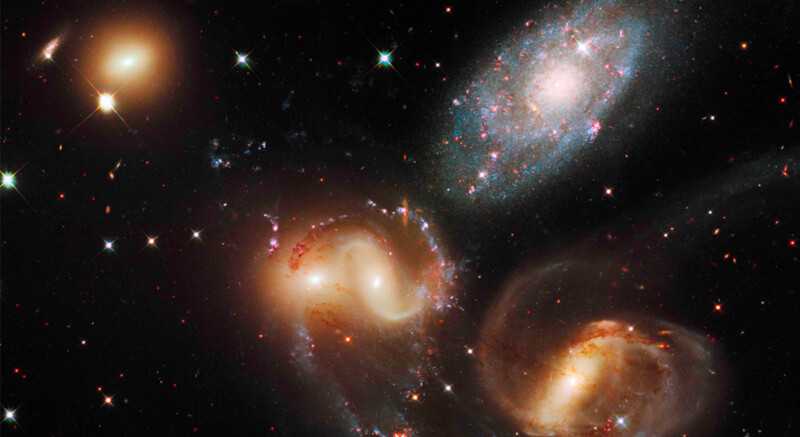
Although the James Webb Space Telescope gets a lot of attention for its impressive technology and many discoveries, the Hubble Space Telescope has remained very busy, and researchers have been using the observatory to perform incredible science.
An international team of astronomers led by researchers at the Cosmic Dawn Center in Copenhagen has investigated a galaxy seen as it was nearly 11 billion years ago. This observation is especially exciting because it was not made using the light emitted from the ancient galaxy but by the light that the galaxy absorbs.
As a news release explains, scientists often see cosmic objects in the same way that people see things on Earth, using the light emitted by the object or because of the light that it reflects. However, the recent Hubble observation was performed using the light that a galaxy absorbs.
If a foreground galaxy is located along the line of sight of a more distant galaxy or other bright light source, the foreground galaxy will absorb some of the light that passes through because of the galaxy’s gas and dust. However, these different particles do not absorb light equally well across all wavelengths, so based on how much light is visible at each wavelength, scientists can deduce various characteristics of the foreground galaxy.
In this case, the bright background light comes from a quasar, which is a highly luminous galactic core. The issue is that quasars are often so bright that they drown out other light sources and can make it difficult to determine much about any absorbing galaxy in the foreground.
“To find absorbing galaxies, we first look for quasars that are particularly red because star dust tends to absorb the blue light but not the red, if there is a dusty galaxy in the foreground the quasar will be reddened,” says John Fynbo, an astronomy professor at the Cosmic Dawn Center in Copenhagen.
As Space.com writes, “This makes spotting an absorbing galaxy with its own light output akin to trying to spot a firefly perched on the lamp of a lighthouse while standing onshore. While this might prove too intimidating a challenge for many, however, Fynbo and colleagues relish it.”
Detecting absorbing galaxies is but one challenge — the harder step is to determine the nature of emitted light that informs the absorption qualities of an absorbing galaxy.
What the researchers have found is that this new look at a very distant, old galaxy offers a fascinating analog to the Milky Way Galaxy.
“The features that we found in the missing light tell us something about the dust in the foreground galaxy,” says Lise Christensen, associate professor at the Cosmic Dawn Center who also participated in the study. “In fact, the dust seems to resemble the dust that we see locally in the Milky Way and one of our neighboring galaxies.”
The fascinating discovery is detailed in a paper, “The galaxy counterpart and environment of the dusty Damped Lyman-alpha Absorber at z=2.226 towards Q1218+0832,” which was recently published in arXiv.
Hubble Offers Dreamy View of NGC 3156
Alongside the fascinating research on absorbing galaxies, Hubble has also been behind some other neat new science and images, including a dreamy look at the galaxy NGC 3156.
NGC 3156 is a lenticular galaxy located about 73 million light-years from Earth in the constellation Sextans. The galaxy has two visible threads of reddish-brown dust that cross the galaxy’s disk.
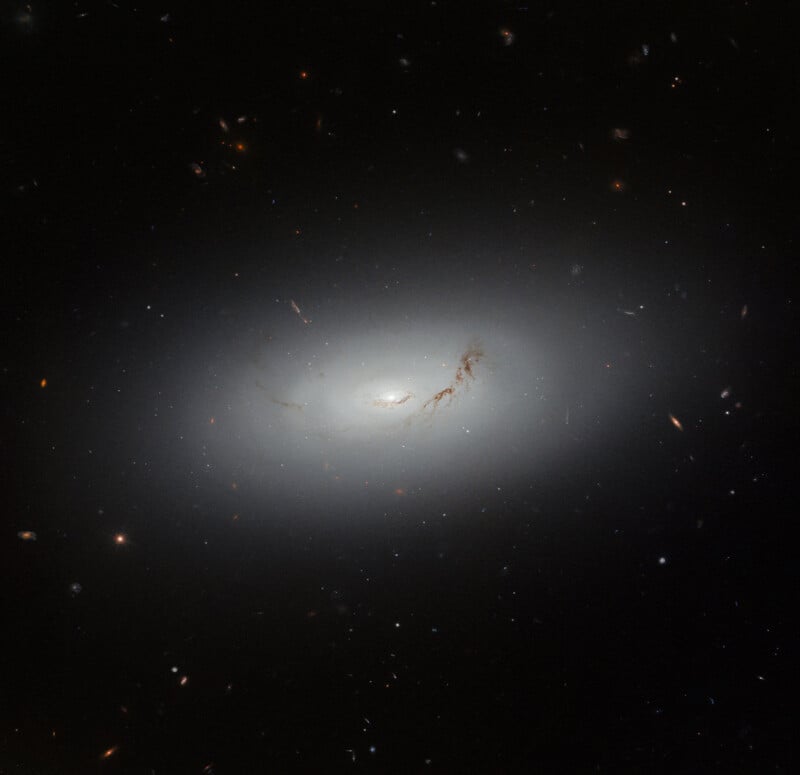
Lenticular galaxies like this one are between elliptical and spiral galaxies in terms of shape and characteristics and share some features with both. Like a spiral galaxy, a lenticular galaxy has a central bulge of stars and a large disk surrounding it. Like elliptical galaxies, lenticular galaxies comprise mainly older stars and do not feature much ongoing star formation.
NGC 3156 has been studied in many different ways over the years, and scientists have used Hubble data to determine that NGC 3156’s central supermassive black hole features “a higher-than-average percentage of stars gobbled by its supermassive black hole when compared to its counterparts.”
Peculiar Pair of Galaxies
Using Hubble’s Advanced Camera for Surveys (ACS), scientists have looked at Arp 107, a celestial object that includes a pair of colliding galaxies.
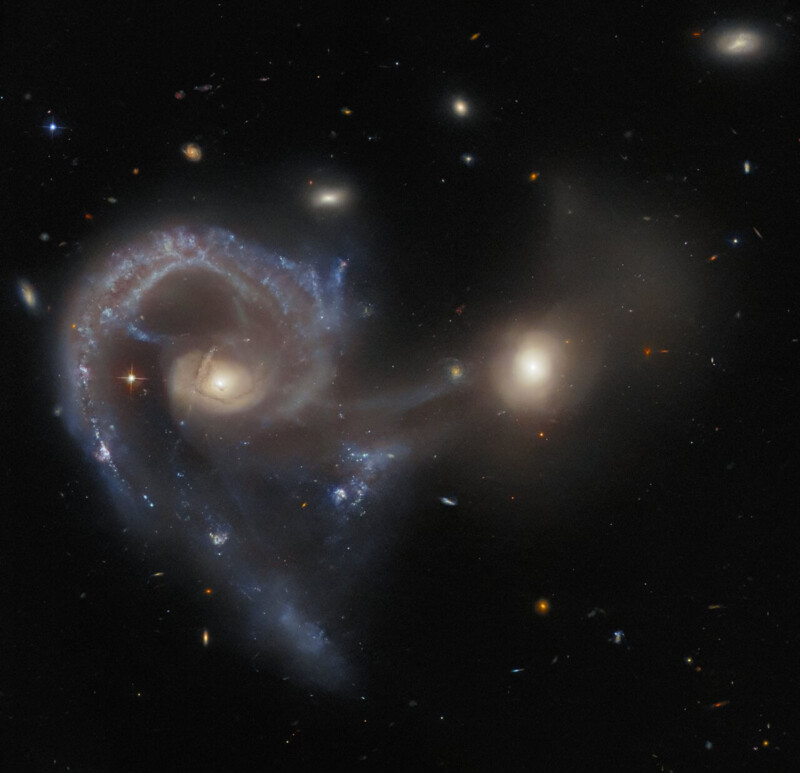
The larger galaxy, a very energetic Seyfert galaxy, is colliding with a much smaller companion galaxy. The incredible interaction has resulted in a “bridge” of dust and gas. These colliding galaxies are located about 465 million light-years from Earth.
Arp 107 is part of a catalog of 338 unusual galaxies called the Atlas of Peculiar Galaxies. Like Arp 107, many members of this catalog have been imaged by Hubble as part of an ongoing observation program. The program has resulted in many other incredible images, such as the two below.
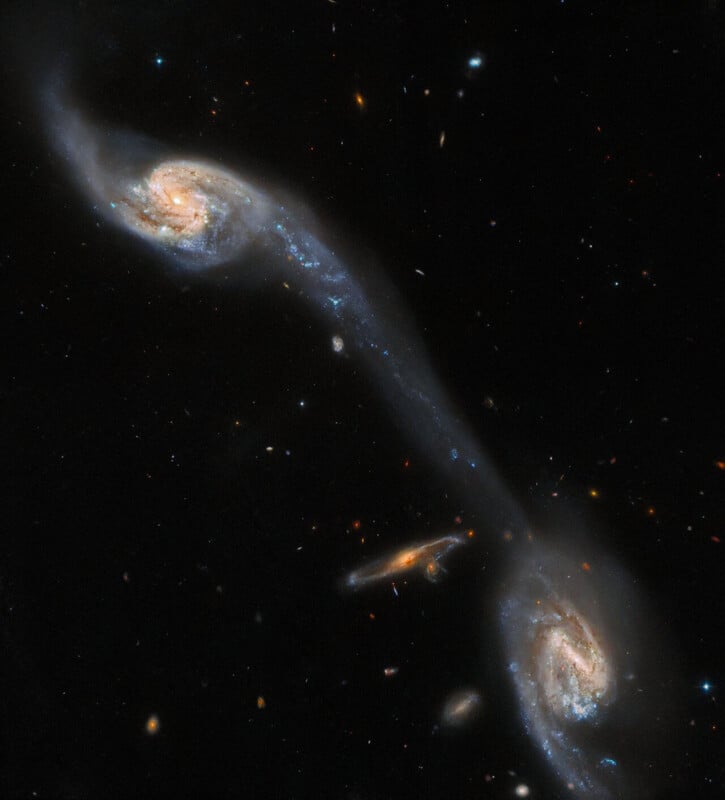
Arp 248 | Credit: ESA/Hubble and NASA, Dark Energy Survey/DOE/FNAL/DECam/CTIO/NOIRLab/NSF/AURA, J. Dalcanton
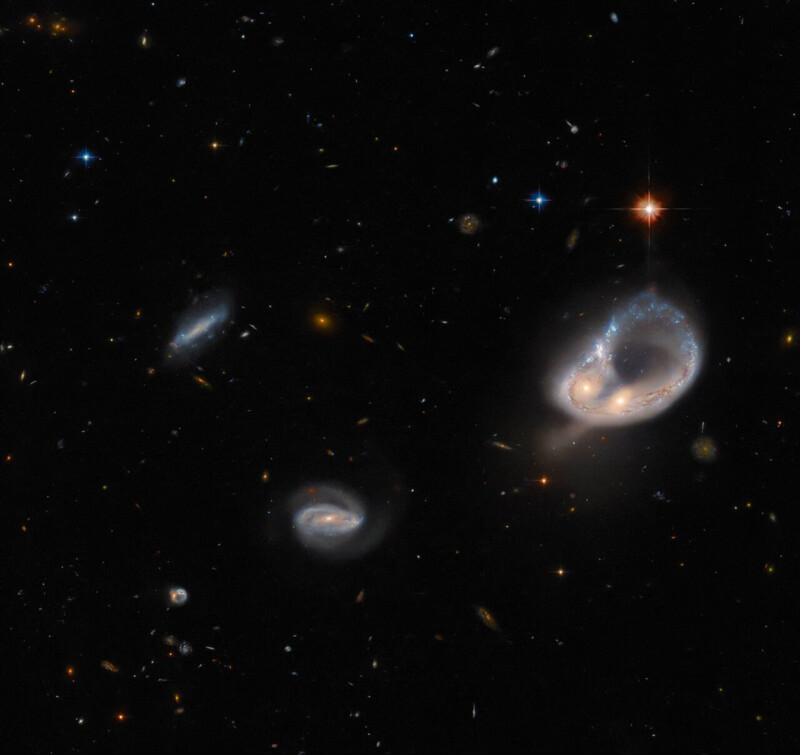
The Hubble Space Telescope is poised to provide many more beautiful images during its mission lifetime. The space telescope recently spied a massive baby star and a beautiful star cluster. Hubble celebrated its 33rd year in space this past April.